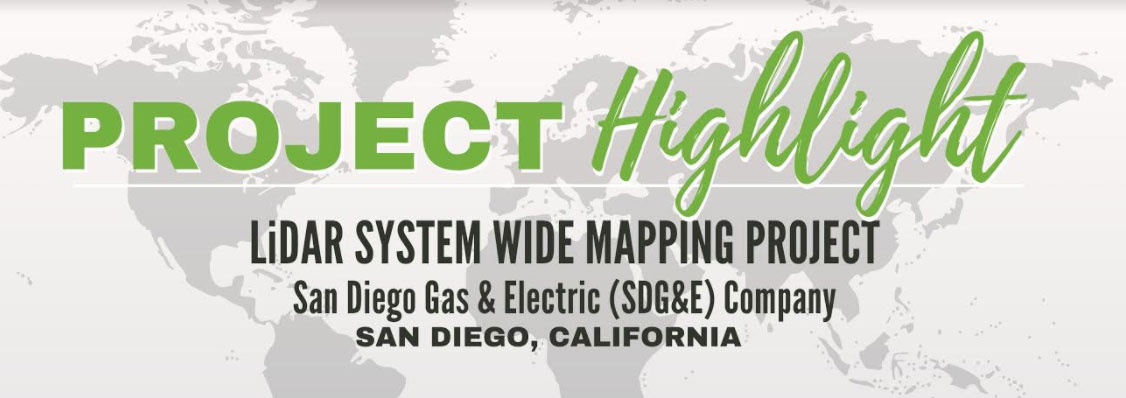 San Diego Gas & Electric (SDG&E) Company
San Diego Gas & Electric (SDG&E) Company
San Diego, California
GIS Surveyors was awarded a follow-on project with SDG&E to manage the LiDAR system wide mapping collection and QA/QC. The objective of this project is to collect high-resolution aerial LiDAR data covering the entire San Diego Gas and Electric (SDG&E) network of power lines and structures. This data set covers approximately 8,900 miles of a 400-foot power line corridor with a three-dimensional point cloud at a resolution of at least 50 points per square meter.
The center 75-foot swath was classified to SDG&E’s TE-0135 specification for ‘Surveying, Aerial Photography and Mapping of Overhead Transmission and Distribution Line Corridors’, while the remainder of the swath was left unclassified, but available for further classification if needed. Along with the LiDAR data, imagery from three different cameras was used to produce orthoimagery, as well as oblique imagery from forward and aft looking points of view of each structure within the network.
The data was collected using a topographic LiDAR system mounted to the underside of a helicopter flying at 500-feet above ground level at approximately 35 knots over ground. Once collected, the data was processed and classified by our LiDAR Analysts then a PLS-CADD data set was delivered.
This deliverable is used by SDG&E to update the GIS data for structure and conductor locations and condition assessments, as well as informing vegetation management and change detection.
Final Product, Outcome and Client Benefits
The client was provided with accurate location and elevation of the entire distribution and transmission system network. The following benefits were realized to the client:
- Accurate and complete location and elevation data set of the entire network
- Ability to model the power system for engineering and design
- Data to assist and predict vegetation management around power lines
- Fire mitigation measures
KEY COMPONENTS
- LiDAR and Imagery Acquisition
- LiDAR Processing and Classification
- Orthoimagery
- Project Management
- Schedule
- Budget
- Coordination and Delivery
- Development and implementation of QA/QC plan to ensure
- Proper identification of classified features
- Accurate spatial location of features
- Data attribution verification
- Error reporting and resolution workflows

